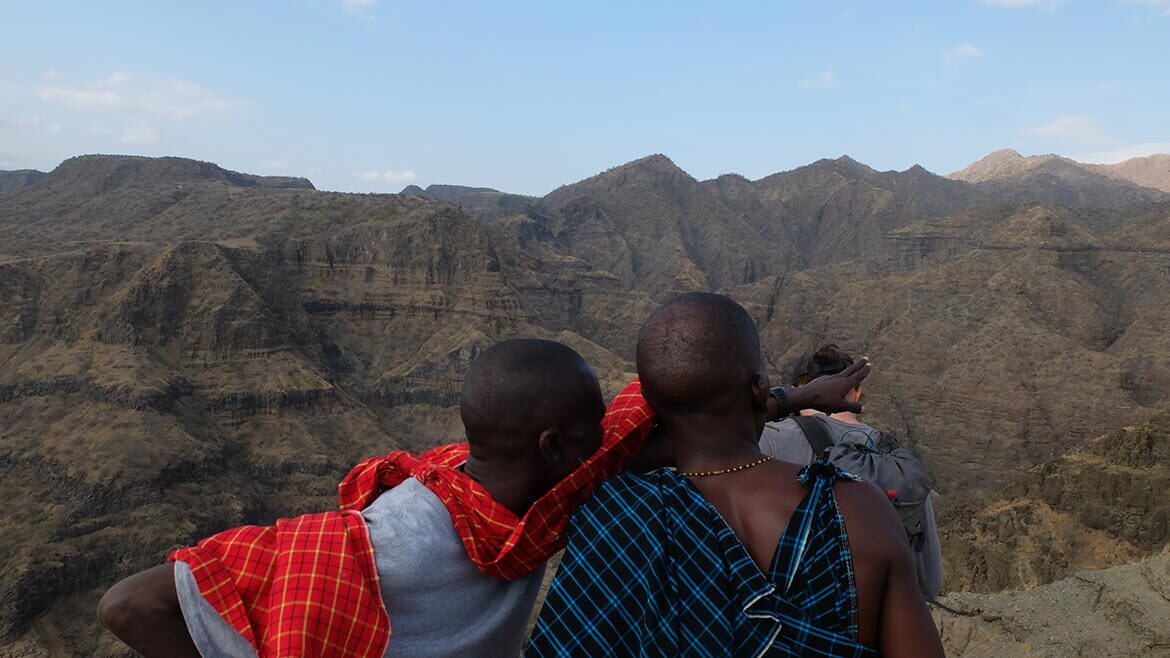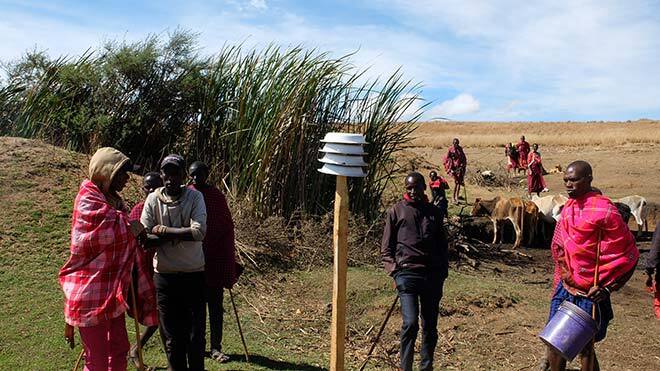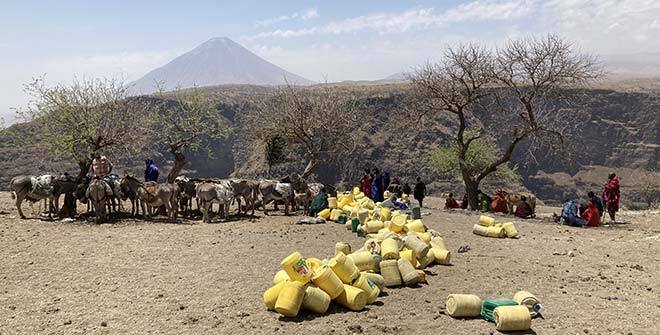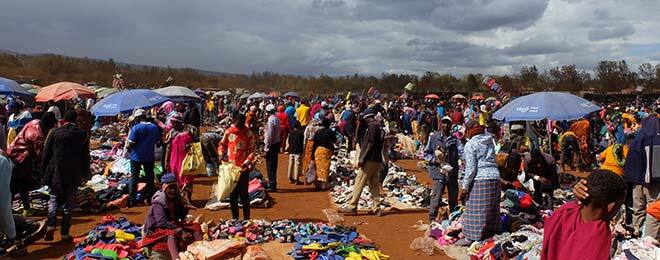Diviner’s apprentices in Maasai country

@the authors.
William Léonard, Simon-Pierre Fortin and Étienne Tardif, ÉTS Bachelor-level graduating students in Mechanical Engineering, flew to Tanzania in September 2022 for their final project. The goal of the project is to evaluate the possibility of installing a water delivery and distribution system in five villages in the remote Ngorongoro region, which is populated by Maasai communities.
This first phase is part of the ENGARE program, headed by Arpakwa Ole Sikorei, a local partner, and his organization entitled Safari to School.
According to William: “Our plan was to bring water from point A to point B. However, the needs of the communities are very different from what we expected.” In fact, the difference between the theory and the reality of the situation turned out to be several kilometres of distance. “We had to adjust to their way of working, their customs and their way of life …” Simon-Pierre continues. “Everything is much more complex than it seemed on paper,” Étienne concludes.
Searching for water, finding a solution
The Maasai are a population of semi-nomadic cattle raisers. Just like everywhere else, climate change has disrupted the seasonal cycle here, and the natural water reservoirs are drying up. The three students installed weather stations in each of the five villages covered by the study in order to validate NASA’s satellite data. The engineers responsible for designing the systems can later use this information for modelling river basins and precipitation levels throughout the year in order to identify perennial water sources.

The trio have accomplished a great deal since their arrival, and are close to attaining their objectives: quantifying the water needs of Maasai communities in the Ngorongoro region, proposing solutions and demonstrating the sustainability of projects with the help of sustainable development tools.
William, Étienne and Simon-Pierre are on their second tour of the villages, accompanied by their loyal interpreter, Tate Oleku, who is a full-fledged member of the team. Without his help, the young adventurers would never have been able to forge links with the Maasai or enter into their colourful universe, which is filled with unique rituals. The team has catalogued the sources of drinkable water, met with the governing authorities from each village, learned about the expectations of the Maasai, discussed possible approaches and come to understand the degree to which sociocultural factors will determine the success of the technical component of the project.
Theory versus reality
An on-site analysis led to three main conclusions. First, the shorter route is not always the best route. Maasai communities are looking for a water supply that will serve both the cattle and the population. William explains: “The objective is not necessarily to bring water into the centre of the village, because then they would have to bring the cattle there too.” The second conclusion is that the topography of the area plays a crucial role. The team had evaluated the distance to travel between the villages and a water source to be a few kilometres. However, the reality is that villagers must travel approximately a dozen kilometres, and even up to twenty kilometres in some cases, to reach a source of drinkable water. Finally, the third conclusion: “The villages are larger than expected, and encompass sub-villages. Therefore, there is unquestionably a need for three or four water delivery systems to properly serve the entire agglomeration”, Étienne confirms. As a result, they must expand their field of reflection.

Students on safari
William, Simon-Pierre and Étienne took advantage of a few days off to go on a safari to the Ngorongoro Crater Highlands, a UNESCO world heritage site. They discovered a region thriving with wildlife, including lions, giraffes, hippopotamus, baboons, zebras and others.
Their immersion into Maasai culture presents a number of challenges, especially on the culinary side. Nothing goes to waste here. Étienne recalls: “Sometimes, when we were served a stew of lungs and intestines, we felt just a little bit farther from home.” They also discovered a complex social structure among the Maasai, along with an impressive capacity for adapting to change.
Remote supervision from ÉTS
Relying in large part on financial support from ÉTS, the students are under the supervision of three professors from the Mechanical Engineering Department. Eric Wagnac oversees the organizational aspects of the project, Marlène Sanjosé provides technical advice and Philippe Terrier provides guidance with respect to integrating the principles of sustainable development.
Who will take up the cause?
William, Étienne and Simon-Pierre would like for the Mechanical Engineering Department to take charge of designing the solutions that they propose in their feasibility study. They have targeted a number of organizations involved in international cooperation that can continue their work on the ground. William asserts: “We are building partnerships with the people here, but if there is no follow-up, it will end up in failure.”
Accelerated learning curve
The three future engineers anticipated transferring a certain amount of knowledge to the Maasai, but they soon realized that even the best technical solutions will simply go by the wayside if they don’t meet the expectations of the populations for whom they are intended. Another aspect that William, Étienne and Simon-Pierre staunchly defend is the creation of water delivery systems that the communities can take ownership of and maintain themselves.

The three graduating students will be back on a plane headed for Montréal on December 19. They believe that they have taken the all-important first step, and they hope to pursue their efforts in the world of international cooperation. Making a difference in a place where engineering and sustainable development solutions can simplify the lives of people who are among the least polluting populations on the planet.


